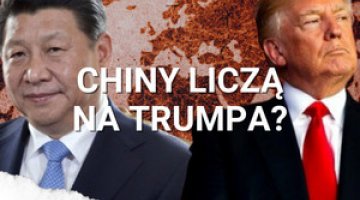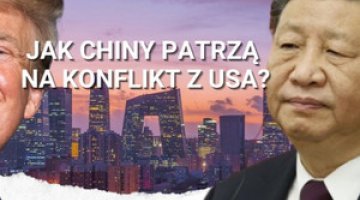Blinken in Beijing: stabilisation with no prospects for a breakthrough
After months of diplomatic wrangling, Beijing has agreed to a visit by the US Secretary of State with the aim of stabilising the deteriorating US-Chinese relationship and reopening channels of communication. However, the differences between the two parties are too fundamental to hope for a breakthrough in the foreseeable future.
US Secretary of State Antony Blinken paid his first visit to the People’s Republic of China (PRC) since he took office in January 2021. The last head of US diplomacy to visit the country was Mike Pompeo in October 2018. On 18 June, Blinken held talks in Beijing with the Chinese foreign minister Qin Gang, and a day later he also spoke with Wang Yi, a member of the Political Bureau of the Central Committee of the Communist Party of China (CCP) and Director of the Office of the Foreign Affairs Commission of the CCP Central Committee. Blinken was also received by Xi Jinping, General Secretary of the CCP and Chairman of the PRC.
Both sides agreed to maintain high-level contacts. Blinken invited Qin Gang to visit the United States and the latter expressed his willingness to travel there “at a mutually convenient time”. The two also agreed to continue consultations within a joint working group to address specific issues in their countries’ mutual relations. The two countries will also foster the expansion of bilateral cultural and educational exchanges. The statements released by the two sides after Blinken’s meeting with Xi Jinping indicate that their conversation did not result in any real rapprochement between the positions of the two countries.
It hasn’t been that bad in a long time
Relations between the two countries are currently in their most difficult phase since the so-called Third Taiwan Crisis in 1996, when President Bill Clinton deployed the US Navy to protect Taiwan. China has stepped up its military pressure on Taiwan and Japan in an effort to change the status quo in the Taiwan Strait and the East China Sea; it has also continued its militarisation of terrestrial areas in the South China Sea. In the international arena, it has maintained a semblance of neutrality but extended political and economic support to Russia: it has been increasing its imports of Russian energy resources as well as its exports of dual-use civilian-military products to Russia. Washington has sought to deepen China’s technological isolation, especially in the semiconductor sector. It has also stepped up its efforts to expand coordination with its allies in Europe and Asia in order to minimise the risks associated with excessive economic ties with China (de-risking). This dynamic of bilateral relations carries the risk that a minor incident will lead to an escalation in tensions and the uncontrolled breakdown of mutual relations.
The two sides sought to stabilise relations at the G20 summit in Bali last November (see ‘A tactical pause in relations with the West: China plays on hopes for peace’), which made it possible to prepare Blinken’s visit to Beijing in February this year. However, it was cancelled in the wake of the incident involving a Chinese spy balloon that was detected and shot down over US territory (see ‘The Chinese balloon over the USA’); Beijing then halted dialogue between the two countries’ senior military commanders. Before agreeing to set a new date for the visit, Chinese officials articulated a number of expectations towards the US, including that it should “recognise the Taiwan issue as China’s internal affair” and stop “undermining China’s sovereignty, security and development interests in the name of competition”. In this way, they were effectively expressing the hope that the US technological sanctions, particularly in the field of semiconductors, would be lifted. This situation led to several months of stalemate in relations between Beijing and Washington, as well as a significant reduction in communication between the two sides.
The deterioration of Chinese-US relations accelerated last August after a visit to Taiwan by Nancy Pelosi, then Speaker of the House of Representatives (see ‘Chińsko-amerykańska próba sił wokół Tajwanu’). Last February, in addition to the downing of a Chinese balloon over the United States, Blinken and Wang Yi clashed on the sidelines of the Munich Security Conference, when the US side charged China with considering supplying weapons to Russia. The Chinese side responded by freezing some vital diplomatic contacts and stepping up its anti-US rhetoric. Washington has also imposed more technological sanctions in coordination with its allies. A week before Blinken’s trip to Beijing, the media reported that the Chinese military had been operating an electronic eavesdropping base in Cuba.
Despite these multiple points of contention, in recent weeks the two countries have taken steps to restore high-level contacts in order to better manage the tensions. The US has stressed that maintaining regular dialogue at this level is important in itself, as it will allow the two sides to respond quickly to any crises that may arise now that the Chinese and US militaries are increasingly coming into direct contact with each other.
Not being the bad guy
Beijing’s far-reaching demands and its failure to respond to the signals coming from Washington (not only from the State Department, but also from the Pentagon) regarding the US’s desire to restore high-level communications were primarily intended for China’s domestic propaganda narrative. The CCP leadership must be aware that these demands will not be considered. Nevertheless, at the same time the Chinese leaders are trying to portray themselves internationally (especially towards their European partners) as a rational party that is open to dialogue. This is why they finally decided to agree to Blinken’s visit, even though Washington had not made any gesture that the CCP could present as a victory: the minor steps taken, such as President Joe Biden’s remark that Xi Jinping did not know about the spy balloon’s mission, cannot be regarded as such.
In this context, it is also significant that around the same time China’s new premier Li Qiang started his first overseas trip, heading to Germany and France. The Chinese government is hoping to weaken the ability of European countries to coordinate with Washington on China. It appears that the US side is also guided by the need to show its European partners and the developing countries that it is ready to engage in talks with Beijing. The Biden administration is acting on the conviction that the EU is currently not ready to take as far-reaching steps against the PRC as the US has taken, and wants to keep the channels of communication with China open. Washington’s current priority is to maintain the West’s cohesion, which is why Blinken went to Beijing despite the reports of a Chinese base being set up in Cuba. In turn, his reception by Xi Jinping is meant to send a signal to Beijing’s partners in Europe and the global South that China is seeking to stabilise relations as well. It also meets the expectations of international business, which has been scaling back its investments in China out of concerns over the consequences of Beijing’s rivalry with Washington.
More problems ahead
It is in both China’s and the United States’ interest to restore and maintain their channels of communication, but we should not expect such steps to bring about any significant improvement in relations between the two countries. Firstly, the Chinese-US rivalry is fundamentally structural in nature, and neither side is prepared to make concessions that would allow them to reach a lasting agreement and remove the points of contention. Secondly, the political calendar does not favour the further stabilisation of relations. Taiwan will hold presidential and parliamentary elections next January, and China is likely to ramp up its military pressure on the island, possibly as early as this autumn, in the hope of influencing the outcome of the elections, just as it has done in the past. As a result, Congress will step up pressure on the Biden administration to send a stronger signal of support for the Taiwanese democracy. In the spring, the US will kick off campaigning for the presidential and congressional elections that will be held in November 2024. As in the previous election campaign, the issue of relations with China will become one of the major topics, which will probably see both parties adopting a tougher US policy towards Beijing.




